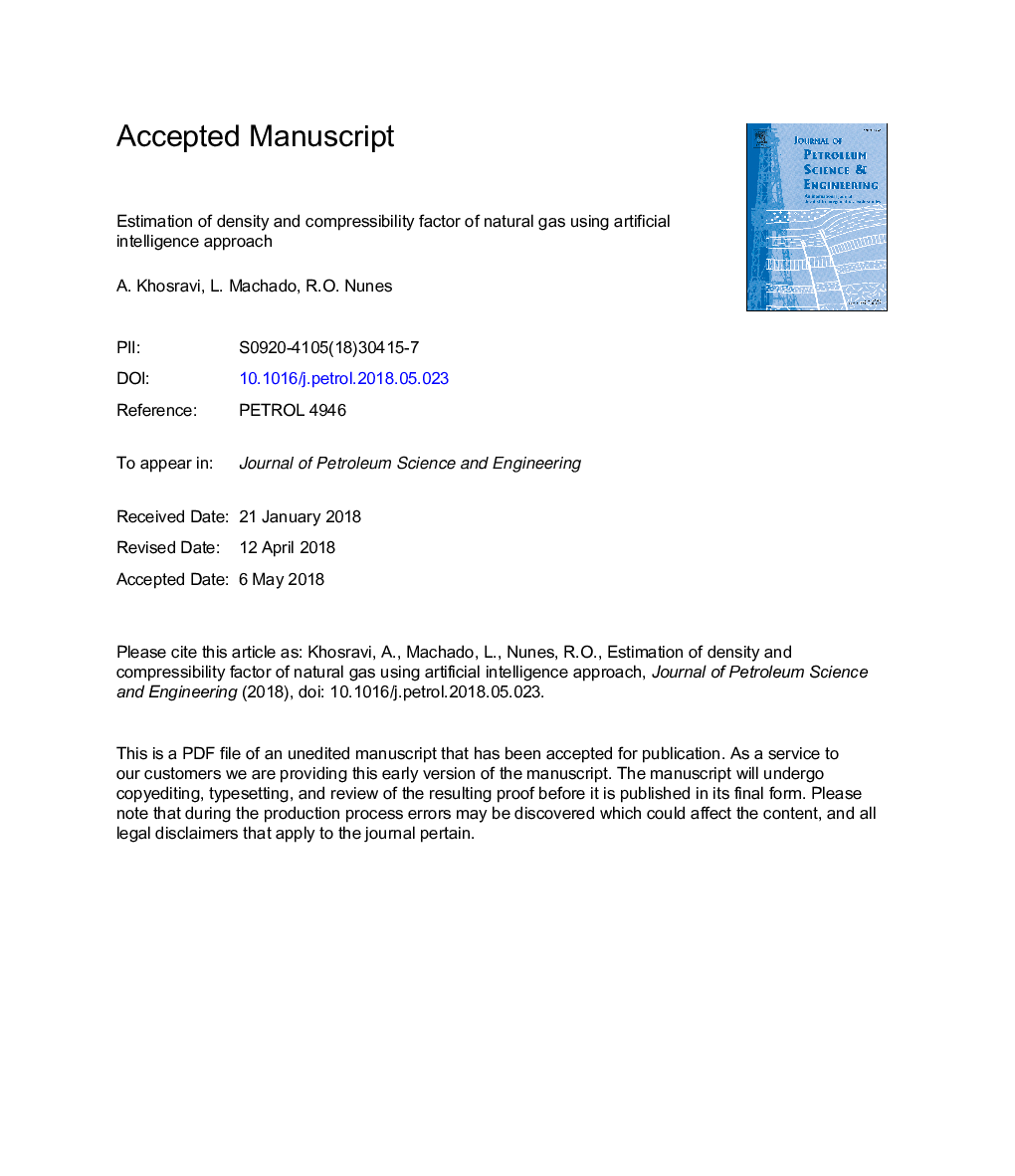| Article ID | Journal | Published Year | Pages | File Type |
|---|---|---|---|---|
| 8124684 | Journal of Petroleum Science and Engineering | 2018 | 28 Pages |
Abstract
Natural gas density is commonly measured by Coriolis density meters and gas chromatographs, both of which are used to calculate the natural gas mass flow rate. In this study, two networks are proposed to predict the density and compressibility factor of natural gas. The first network (N1) uses temperature, pressure and Joule Thomson (JT) coefficient of natural gas as input variables and density of natural gas is selected to be the target. This network is proposed to predict the natural gas density at natural gas pressure drop stations (CGSs). For this network, the gas mixture compositions are unnecessary. The second network (N2) is proposed based on the pseudo reduced temperature and pressure as input variables that the network by using these two variables can predict the density and compressibility factor of natural gas. This model needs the gas mixture compositions. For these targets, a novel idea based on artificial intelligence is used. Five models of artificial intelligence are implemented that are fuzzy inference system (FIS), adaptive neuro-fuzzy inference system (ANFIS), ANFIS optimized with genetic algorithm (ANFIS-GA), multilayer feed-forward neural network (MLFFNN) and group method of data handling (GMDH). The results demonstrated that the ANFIS-GA and GMDH model performed better than the FIS, MLFFNN and ANFIS models. For N1, root mean square error (RMSE) for ANFIS-GA and GMDH models were obtained as 0.2405 and 0.2042 (kg/m3), respectively. For N2 (compressibility factor), the value of RMSE for ANFIS-GA and GMDH models consecutively was achieved 0.0061 and 0.0054. Also, for N2 (density), RMSE for ANFIS-GA and GMDH models was taken 2.2735 and 2.6113, respectively. These values of RMSE were reported for the testing phase of the models.
Keywords
Related Topics
Physical Sciences and Engineering
Earth and Planetary Sciences
Economic Geology
Authors
A. Khosravi, L. Machado, R.O. Nunes,
